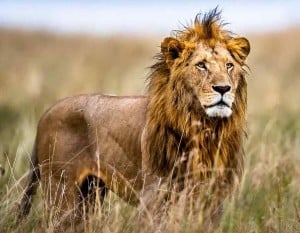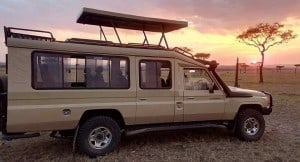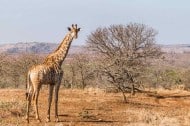
Top Parks You Must Visit For Your Safari In Tanzania
Tanzania is one of the best countries you can choose if you want to take a traditional safari. Going in a safari gives you the chance to see the wildlife that the country has to offer, as well as the incredible scenery and natural attractions that are sure to wow you too. Tanzania has a fantastic selection of national parks and other parks that are ideal for a perfect safari. Whether you want to rough it on a more basic safari or you’re looking for a luxury experience, you can discover some unforgettable places that are sure to delight you. Of course, you don’t have to choose just one park. If you’re ready to explore the country, why not try out several of the amazing parks on offer?
Tanzania has plenty of national parks to explore, and the open plains offer a true glimpse of the wild and rugged nature. One of the best things about the national parks is that they are protected areas so you can see unspoilt nature and know that the flora and fauna there are looked after. You might be looking for a specific experience, such as watching migrating wildebeest, spotting the Big 5 animals or finding a rainforest for some incredible flora. Use this guide to discover a selection of some of the most incredible parks in Tanzania and decide which one might be right for you.
Serengeti National Park
There aren’t many people who haven’t heard of Serengeti National Park. If you haven’t heard it because you’re a fan of ’80s power ballad band Toto, then you’re sure to have seen it on a map or in a nature documentary. It’s the best known national park in Tanzania, and for good reason. The Serengeti also expands beyond the park, and is actually an entire ecosystem in northern Tanzania. The park is excellent for game viewing and it’s also a particularly good choice if you want a good selection of camps. The rolling grasslands allow you to find different wildlife in different areas and discover all of the best-known animals.

The Serengeti is one of the best places to see The Great Migration of wildebeest and other animals, one of the most spectacular sights in nature. One of the experiences you can consider is watching a river crossing, which you can do between June and November. Serengeti National Park offers some great options if you’re looking for a luxury stay, with some very comfortable camps that will make your stay pleasant. You can stay in luxurious tents or even treehouses, using your camp as a base to explore the best Tanzanian wildlife but also using your camp to experience even more.
Ngorongoro Crater Conservation Area
If you’re looking for somewhere different, the Ngorongoro Crater is where you can find it. This park is where you can discover a crater that has formed from a collapsed volcano. It’s such a spectacular sight that it’s often referred to as the Eighth Wonder of the World. The crater offers an amazing sanctuary for animals, resulting in the highest density of mammals in Africa across the floor of the crater. Measuring approximately 16 miles across, the bottom of the crater gives you year-round game and wildlife viewing. It’s a great place to spot the Big Five.
There are two lakes at the bottom of the crater, which help to attract a lot of the wildlife. If you’re going on a safari because you want to do some photography, this is a fantastic place to do it. It’s one of the places where you might be able to catch site of the black rhino, a critically endangered species. It also has a large concentration of spotted hyenas and lions. Plus, you can discover some incredible history, with archaeological sites and 3.6-million-year-old human footprints. This is a unique place to visit and even the low season offers plenty of chances to see the local wildlife.
Lake Manyara National Park
Lake Manyara is a fantastic choice if you want to see tree climbing lions. It’s one of the smaller parks that you can visit, but its small size doesn’t mean that it’s a lesser choice. It’s also perfectly positioned to visit between Serengeti and Ngorongoro, so you can visit all three of them in one trip. The lake takes up a lot of the 330 square kilometres of the park, and you can enjoy some incredible views of the lake when you visit. Thanks to the lake, you’ll find plenty of birds here, over 400 species in total, including flamingos. As well as the tree climbing lions, you can also spot elephants, baboons and plenty more.
It’s only a 45 minute drive from the Ngorongoro area to reach Lake Manyara, and you can access the park at the northern edge. It can get busy because it’s so close to two other big parks, but if you want to visit when it’s quieter, try arriving in the early morning. If you’re interested in staying nearby, the traditional Maramboi Tented Camp is on the shores of the lake, or you can choose Oliver’s Camp if you’re looking for somewhere that’s within the park.
Tarangire National Park
Tarangire National Park is one of the only park in northern Tanzania where you can find a large concentration of elephants all year. You can see up to 500 of them along the riverbanks. The arid plains feature more vegetation than you’ll find in the Serengeti, and there’s lots of other wildlife to see. Best visited in the dry season, it has one of the highest concentrations of animals during that time. You might be able to spot buffalo, gazelle, wildebeest, zebra and more during your visit. More than 500 species of bird have also been recorded in the area. You can even see some ostriches.
This park offers visitors the chance to see some African wild dogs, which are rare and not always so easy to spot. It’s also the only place in Tanzania to see the generuk, otherwise known as the giraffe gazelle. And for anyone more interested in the flora than the fauna, there are some excellent examples of giant baobab trees. You have a diverse selection of places to stay if you’re looking for accommodation nearby, including the treehouse accommodation of Tarangire Treetops for people who want something of an adventure.
Selous Game Reserve
For a park in the south of the country, Selous Game Reserve is a large option that isn’t as well known as some other parks but is still an amazing place for a safari. In fact, it’s so big that it is four times the size of the Serengeti and is Africa’s largest game reserve. The ecosystem is relatively free from human interference and it’s one of the three UNESCO World Heritage sites in Tanzania. Even before getting to the wildlife that you can find there, the area itself is extremely impressive and not to be missed.
But if you are looking for animals, about a third of the world’s wild dog population lives in the area. Tens of thousands of elephants migrate through the reserve each year, and crocodiles and hippos can be spotted in the lagoons. Other residents of the park include more than 100,000 buffalo, zebras, baboons, kudu, wildebeest, sable antelope and giraffe. Selous is a good choice if you want something that’s more off the beaten track than some of the more popular and busier parks. It’s a good option for everyone from loved-up couples to families who want a bit more privacy.
Ruaha National Park
Some national parks might seem a bit too polished, particularly if they’re very popular with tourists. For something that’s a bit more wild and rugged, Ruaha National Park offers something different. This is the kind of place where you want to have a good guide who can really show you everything that there is to experience. The dramatic scenery is great to see in person and will make some good photos to look back on later, and a knowledgeable guide will help you to navigate it all. You can explore a variety of landscapes, from woodland to savannah.

This is the second largest national park in the country, offering opportunities to see both game and predators. Leopards, lions and wild dogs live in the same region as impala and waterbuck, plus around 10,000 elephants live in the park. Although you can spot wild dogs, hyena and jackal are much more common to see. Gazelles and giraffes can also be found, and the over 500 species of bird include raptors, vultures and hornbills. This is a good place to try out a walking safari, and you can find accommodation including luxurious tents and some lodges.
Gombe Stream National Park
The Gombe Stream National Park was made famous by Dr Jane Goodall’s research at the park in the 1960s. This highly protected area is still a good place to see chimpanzees in an environmentally-friendly and responsible way. The chimps are still being studied to learn more about their behaviour and see what they can teach us about the world around them too. It’s a small park but still has a range of landscapes to explore, from grasslands to forest. It’s a perfect habitat for chimpanzees, although only about 150 of them live in the park.
Protecting the chimpanzees is a priority in this park, especially as human diseases are a risk to them, due to chimps sharing so much of our DNA. With the right guide and a stay of at least a couple of days, you will have a higher chance of seeing some chimpanzees. However, even if you don’t spot any, you can still see baboons, vervet monkeys and red-tailed colobus, as well as elephants, bush pigs and even sometimes a hippo. Accommodation options include Gombe Forest Lodge and Gombe Bush Camp to help you get into prime position to see everything that you want to see.
Katavi National Park
Katavi National Park is the third largest in the country, but it’s also more remote and difficult to access compared to other parks. It receives only a few hundred visitors each year, but for some people, this makes it the ideal place to see. This is a wild and diverse area that offers an exclusive option to anyone who wants to do something different. It takes four to five hours to reach the park by light aircraft, which is why it’s so infrequently visited, but there are still options for accommodation, guides and other services to help you explore the park.
Crocodiles and hippos are particularly abundant, with hippo numbers reaches up to 600 in the Ikuu hippo pool. Elephants, buffalo, zebra and waterbuck are all in the area, as well as spotted hyena, hartebeest and giraffe. Vultures and fish eagles are just two of the birds that you could see, and you’ll also see vervet monkeys if you look up. Plenty of water birds are there to enjoy too. The Nomads Chada Katavi Tented Camp is close to the airstrip, which makes accessing the park easier, or you could stay at the Katuma Bush Lodge.
Mahale Mountains National Park
For another remote safari destination, the Mahale Mountains National Park offers an incredible rugged and wild region. As the name suggests, it is dominated by the Mahale Mountain Range. It offers another option for seeing chimpanzees, larger although less accessible than Gombe Stream National Park. There are around 900-1,000 chimpanzees in the park, and opportunities to enjoy some chimpanzee trekking to try and spot some. Lake Tanganyika is found to the west of the park and is the largest freshwater lake in the world. With no roads in the park, you can only walk or get around by boat.
Finding the chimpanzees that can be observed closely means a hike of anywhere from a few minutes to a few hours. However, even a longer walk is worth it to get to see them up close. As well as the chimpanzees, you can find other primates in the park. In fact, it has the highest density of primates of any park in Africa. You can spot colobus monkeys, red and vervet monkeys, and yellow baboons. Another highlight of the park is the beaches that you can discover, where you can relax on the sands or perhaps spend some time snorkelling. If you want to see chimpanzees during your visit, plan to stay for at least a couple of days.
Mikumi National Park
Mikumi National Park is a more accessible choice, which is based around the Mkata River. Hills and woodland can be found to the south of the park, while grassy floodplain forms the north of the park. This park is easy to get to by road, unlike some other parks, so it’s a great choice for a car safari if you would rather travel in comfort. You can discover a huge range of animals here, including baboons, buffalo, hippos, giraffes, zebras and elephants. Lions and leopards can be spotted in the area too.
This park is the fourth largest in Tanzania and the most easily accessible from Dar es Salaam. The paved road connecting the park makes it an easy choice to visit if you want to be able to get to a safari destination without too much hassle. It’s a good place to spot the Big Five and an excellent option for your first safari in Tanzania. Bordering the Selous Game Reserve and Udzungwa National Park, it also makes it possible for you to visit all three locations on one trip.
Arusha National Park
Arusha National Park should be your safari destination choice if you’re looking for all of the action. This safari hub between Kilimanjaro and Mount Meru is not only excellent for wildlife, but also offers you the chance to feel like you’re among local people, and not just surrounded by tourists. In the city, you are among the Maasai and you can spend some time exploring the city while you’re there. When you want to explore the national park, you can find all of the wildlife you can expect to see on a typical Tanzanian safari, with plenty of varied animal life.
Despite the fact that the city is a popular draw, the national park can be overlooked by people looking for a safari. However, this a good thing for people who want to go somewhere that isn’t too busy. You can find Colobus monkeys, elephants, buffalo, giraffes and more than 500 species of birds in the park. Leopards and hyena can be spotted too, although the park isn’t as abundant with wildlife as some other places. The city also makes a good place to stay if you want to explore other parks, giving you a welcoming hub that you can start from and perhaps return to if you want to.
Tanzania certainly has no shortage of incredible parks for your safari trip. You can discover some amazing places for your adventures and book a safari spot.


